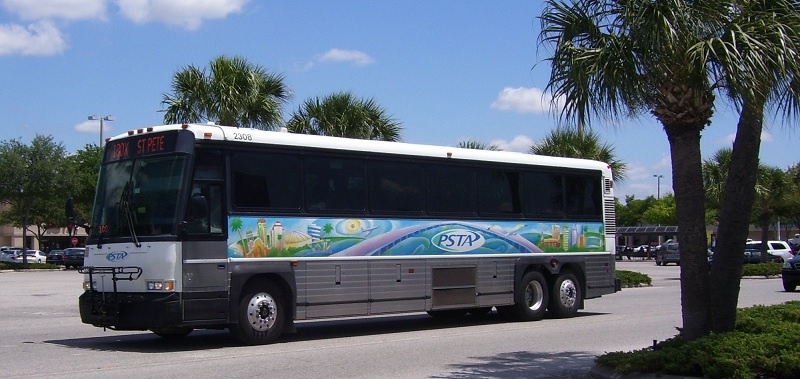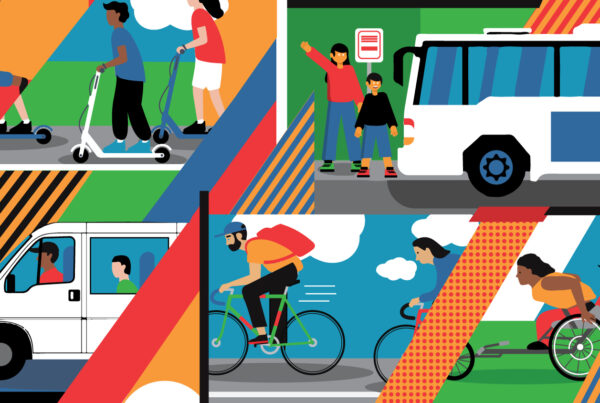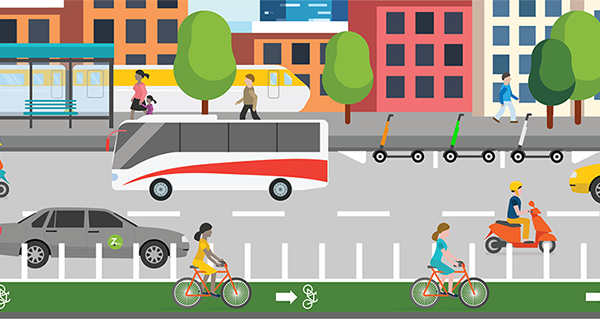In February 2016, Florida’s Pinellas Suncoast Transit Authority became the first agency in the nation to subsidize first/last mile Uber rides through its Direct Connect pilot.
While a few agencies had inked promotional agreements with Uber and Lyft – and others like Centennial, Colorado and the Southeastern Pennsylvania Transportation Authority have since followed PSTA’s example – the agency was the first to engage a ride-hailing company as a direct partner to help move riders to and from transit.
More recently, PSTA announced in June that it would expand its partnership with Uber to provide free, on-demand rides to low-income residents between the hours of 9 p.m. and 6 a.m., when regular bus service is not available. Additionally, as part of PSTA’s program, residents will be able to order up rides using a telephone dispatch service, making Pinellas County the first place in the nation where residents can hail an Uber using a telephone instead of a mobile app.
While it’s not unusual for smaller cities to innovate, the continued advances from PSTA have left more than a few people wondering – how exactly did Pinellas County, Florida become Uber’s low-density laboratory? And, what can other cities and transit systems learn from its approach?
Following are four key takeaways from PSTA’s experience. Also, be sure to attend the National Shared Mobility Summit in Chicago on October 17-19 to hear from Christopher Cochran, the PSTA’s senior planner and lead on the Direct Connect pilot. Register today!
Takeaway 1: Look for Opportunity in Adversity
Like many innovations, Pinellas County’s was born of necessity. The roots of its Direct Connect pilot can be traced back to 2014, when voters rejected a transit referendum that would have added an extra penny in sales tax to expand the county’s bus service and build a 24-mile light rail system.
The defeat hit especially hard at PSTA, which had spent more than two years building a “Greenlight Pinellas” coalition to push for the referendum’s passage. According to the Tampa Bay Times, PSTA staff even took off the day of the vote to wave “Yes on Greenlight” signs on the street with other supporters.
“It’s not the outcome that we expected, but the citizens have spoken and spoken clearly,” said PSTA board chair Ken Welch in an interview. “But the transit conversation has to continue.”
It wouldn’t necessarily be a pleasant one. The agency had been relying on reserves to make up for revenue shortfalls, and the defeat meant that tough decisions were ahead. During the campaign, PSTA suggested it might need to reduce service by as much as 30 percent if the measure failed.
“The board said, before you cut, we want you to research and identify all the alternatives people will have in areas where they will lose bus service…especially seniors, low-income, and transit dependent people,” said PSTA Senior Planner Christopher Cochran.
As the agency’s staff did its due diligence, they came across UF Safe Rides, a pilot project that the University of Florida launched in partnership with Uber to provide safe, affordable rides for students traveling to and from campus.
“They basically created a geo-fence around the campus and said, ‘if you hail an Uber ride with a promo code during these hours within this boundary, you get a fifty percent discount on your ride,” said Cochran.
After that, the wheels began to turn.
“When we sat down and did the calculations, we figured if we gave everyone in Pinellas Park $6 a day for an Uber ride, we’d only spend $80,000 a year,” he said.
To fund Direct Connect, the agency decided to use $40,000 in savings from discontinuing its East Lake Connector bus, which cost $160,000 per year to operate but only had an average weekday ridership of 26, making it one of the agency’s lowest-performing routes.
Takeaway #2: Find a Champion
Throughout the referendum fight, PSTA CEO Brad Miller had kept in close contact with Florida Senator Jeff Brandes, who represents southern Pinellas County and serves as the chairman of the Senate’s transportation committee.
Brandes had become especially interested in first/last mile solutions to support transit ridership, and encouraged Miller and PSTA to think of nontraditional ways to keep service available to county residents. Most importantly, he had a relationship with Uber, and offered to broker a meeting so PSTA and Uber could talk about ways they might work together.
“Senator Brandes was really instrumental in pushing us forward,” said Christine Mitchell, Uber’s general manager in Central Florida. “Having a public figure like that from local government to help set the vision and bring the right people together was crucial. I think we would have hit more road blocks if he was not involved.”
Brandes remained engaged as the project progressed, she said, helping to build support for the pilot among local stakeholders.
“You need to bring in people who think differently,” said Brandes. “The first/last mile issue has been around forever…Uber and Lyft have only been around for six years. It’s exciting to be able to use technology to help address some of these age-old problems.”
Takeaway #3: Look for Precedents
Once the meeting took place, things moved quickly. Uber and PSTA settled on the parameters of the six-month Direct Connect pilot. PSTA would pay half the cost of Uber ride, up to $3, that began or ended at a bus stop located within defined areas in the communities of Pinellas Park and East Lake. In addition to Uber, PSTA also secured the participation of United Taxi, a local taxicab operator, to provide rides through the program.
“There was a good, healthy debate among board members,” said Cochran. “We decided that if people didn’t feel comfortable using Uber, they could still use the taxi option and pay with cash.”
United Taxi’s participation also had another benefit. There are very stringent federal drug and alcohol testing requirements for vendors who provide rides to the public through a transit agency. Uber, which relies heavily on part-time drivers, does not have such requirements in place. However, Cochran’s team discovered they could get around that issue by including multiple providers in the program.
“We did some digging around and found that, in 1997, Houston created a voucher system for the city’s taxi companies,” said Cochran. “One of the companies did not meet the drug and alcohol testing requirements, but they made the argument that – because it’s a voucher system and people have access to multiple choices – the requirements did not apply. And the FTA agreed.”
Takeaway #4: Target Outreach to Your Audience
The pilot attracted significant attention when it debuted in early 2016, but ended up getting off to a slow start. According to Cochran, many people who attempted to use the PSTA option in the Uber app did not stay within the pilot’s defined geographic area, so were ineligible to receive the subsidy. Others were simply not aware of the program.
Things improved markedly when Uber began deploying ambassadors to educate residents.
“Part of it was reaching a rider base that we maybe hadn’t spoken to before,” said Uber’s Mitchell, who sent out team members to talk with people at bus stops in the pilot area and show them how to use the app.
According to Cochran, usage almost tripled the next week following the efforts of Uber’s street team.
“That’s something that can be replicated and scaled,” said Cochran. “That’s maybe the biggest takeaway from this.”
Looking Ahead
While the final results of PSTA’s pilot won’t be released until after it officially concludes, it is fair to say that Direct Connect has succeeded in advancing the conversation and shedding new light on how public transit and private shared mobility operators might work together in the future. Several other agencies have since established similar programs, including Altamonte Springs, Florida and SEPTA in Philadelphia.
After all, many have suggested that the public sector should not be afraid to experiment with new ideas just like the private sector. As the mobility world changes and expands, on-the-ground pilots can may be the best way to move beyond speculation and find out what works, and what doesn’t.
“There were some people who said, ‘why do we want to be the first?’” said Cochran, who discounted that mindset. “You just have to believe in the idea, and you have to be persistent. No matter what you come up with, there are going to be naysayers.”
To keep up to date on the latest trends and developments in shared mobility, be sure to sign up for our regular newsletter. And don’t miss the chance to join us at the 2016 National Shared Mobility Summit to talk about these and other developments in ride-hailing, public-private partnerships, Mobility On Demand and more. Click here to register today.
Image credit: Wikimedia



